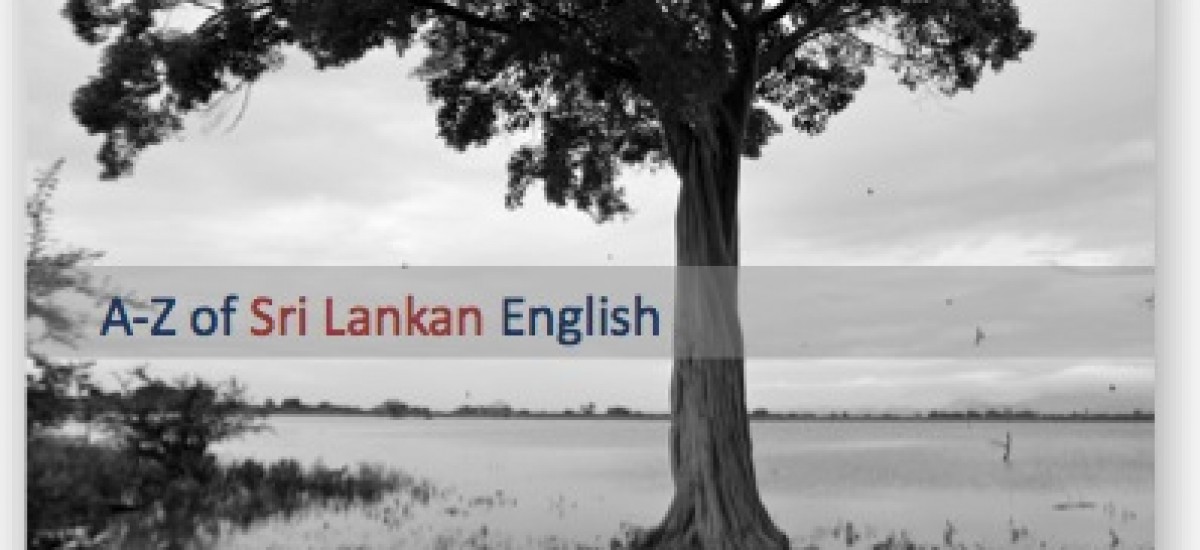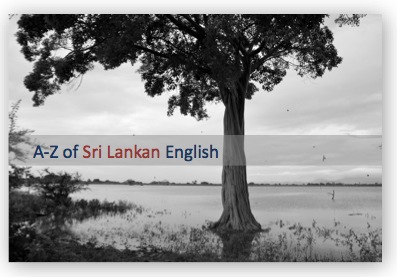The A-Z of Sri Lankan English is back after a break. These short pieces focus on different aspects of the way English is used in Sri Lanka. Collectively they provide a cross-section of the type of features that comprise Sri Lankan English, and demonstrate its unique identity as a distinct variety of English. The whole A-Z can be found here; and more on Sri Lankan English can be found here.
###
When my daughter was studying at “a leading girls’ school in Colombo”, she had a subject called “Link”. She used to talk about “Link homework” and “the Link exam”, rarely referring to the subject by its other name – Tamil. “Link” had become shorthand for the slot in the timetable where Sinhala-medium girls study Tamil, and Tamil-medium girls study Sinhala.
It seems odd to refer to Tamil as a “link language”. The reason for learning Tamil is to communicate with Tamil speakers, not as a “link” to anyone else. Outside the school context of course, it is English which is commonly, and more logically, referred to as the link language. This is how it is defined in the Sri Lankan constitution, while Sinhala and Tamil are defined as “official languages” and “national languages”. Exactly what is meant by these terms is of course a matter of heated debate; and the constitution itself is not very helpful:
18. (1) The Official Language of Sri Lanka shall be Sinhala.
(2) Tamil shall also be an official language.
(3) English shall be the link language.
19. The National Languages of Sri Lanka shall be Sinhala and Tamil.http://www.priu.gov.lk/Cons/1978Constitution/Chapter_04_Amd.html#3#3
But English is much more than just a “link language” in the Sri Lankan context. The term makes more sense in a country such as India or Nigeria, with hundreds of local languages, where English can function as a genuine lingua franca. Here in Sri Lanka, English is the first language of a small but significant percentage of the population, and it is widely used between people of a certain class and/or educational background, in certain social and/or professional contexts, irrespective of whether they are Sinhalese, Tamil, Muslim, etc. These people are mostly bilingual or trilingual, and in other situations they would tend to use Sinhala or Tamil when speaking with non-English speakers. In other words, the determining factor is social rather than communicative necessity. Which is why English is also referred to as the kaduwa – a sword, the antithesis of a “link”, a metaphor for the power wielded by those who possess it over those who don’t.
The terms vernacular and mother tongue are also used somewhat differently in Sri Lankan English. The word vernacular, meaning indigenous language (as in vernacular school), is a colonial term which is still used in the Subcontinent, more or less synonymously with the Sanskrit word swabasha. But this usage is rather outdated in the UK, where the word has come to refer to the informal everyday language of ordinary people, in contrast to more formal educated language. And the expression mother tongue usually equates with first language, but in Sri Lanka there are people whose first language is (and always has been) English, but who still refer to Sinhala or Tamil as their mother tongue. In other words, they associate the term with their ethnic identity rather than their own linguistic competence.
###
A-Z of Sri Lankan English is“an all-new, occasional alphabetical dip“into the variety of English spoken in Sri Lanka, published exclusively on“Groundviews. The original A-Z of Sri Lankan English was published in the travelsrilanka magazine, and can be found here.


